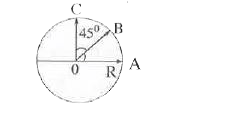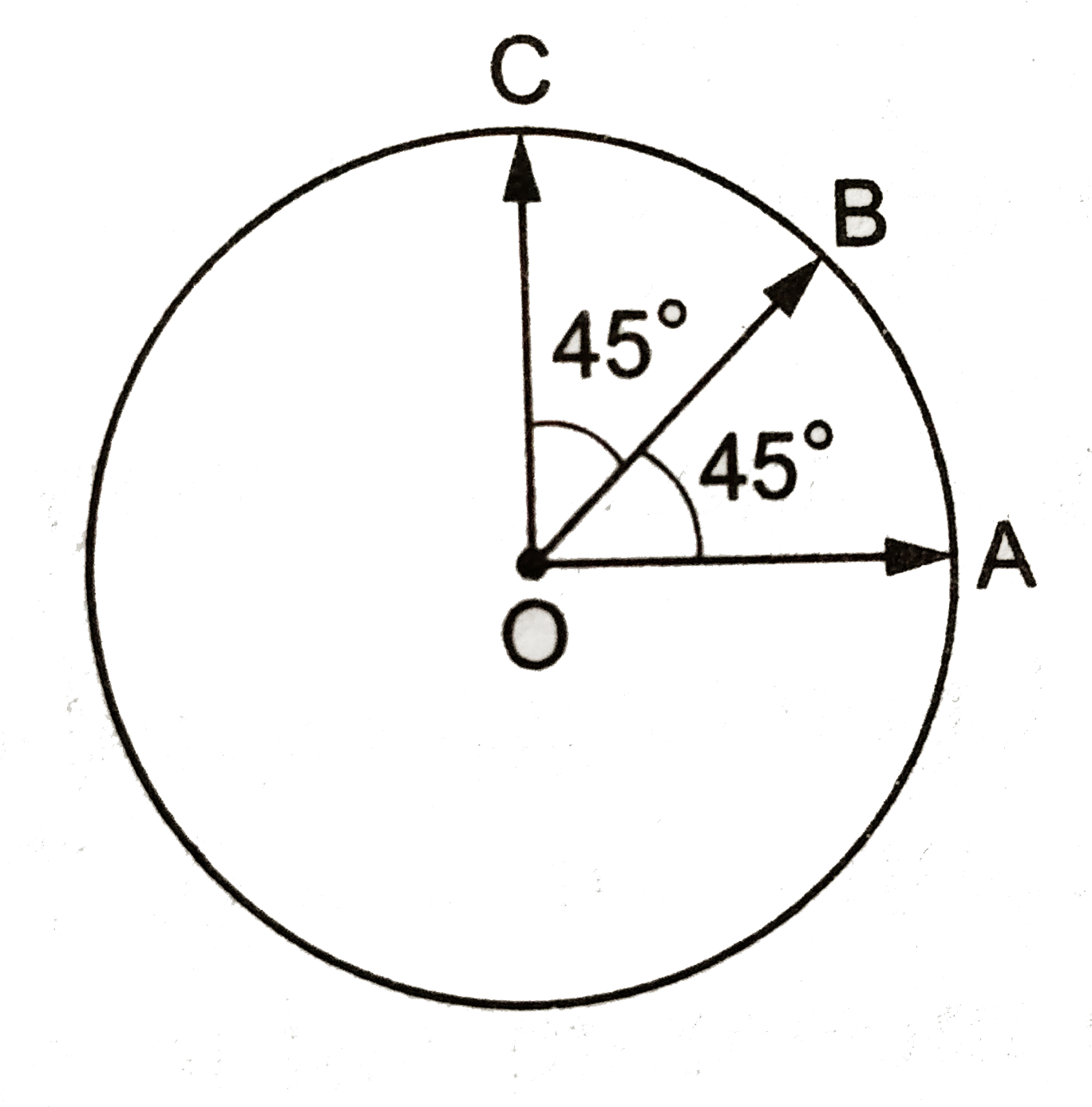The resultant of the three vectors ¯¯¯¯¯¯OA,¯¯¯¯¯¯OBand¯¯¯¯¯¯OC has magnitude (R = Radius of the circle)

√2R
(1+√2)R
(√2−1)R
2R
The correct Answer is:B
Step by step video & image solution for The resultant of the three vectors bar(OA), bar(OB) and bar(OC) has magnitude (R = Radius of the circle) by Physics experts to help you in doubts & scoring excellent marks in Class 11 exams.
Similar Questions
The resultant of the three vectors ¯¯¯¯¯¯OA,¯¯¯¯¯¯OB and ¯¯¯¯¯¯OC shown in figure :-
 View Solution
View SolutionFind the resultant of the three vectors −−→OA,−−→OB and −−→OC shown in figure. Radius of the circle is R.
 View Solution
View SolutionFind the resultant of the three vectors −−→OA,−−→OB and −−→OC shown in figure. Radius of the circle is R.
 View Solution
View SolutionFind the resultant of the three vectors −−→OA,−−→OB and −−→OC shown in figure. Radius of the circle is R.
 View Solution
View SolutionThe three vectors ¯¯¯¯¯¯OA,¯¯¯¯¯¯OB and ¯¯¯¯¯¯OC have the same magnitude R. Then the sum of these vectors have magnitude.
 View Solution
View SolutionPoint P is the endpoint of vector OP and point Q is the endpoint of vector OQ. When the vectors ¯¯¯¯¯¯OP and ¯¯¯¯¯¯OQ are added, what is the length of the resultant vector ?
 View Solution
View SolutionThe sum of the three vectors shown in figure is zero. Find the magnitudes of the vectors −−→OBand−−→OC.
 View Solution
View SolutionThe resultant vector of of ¯¯¯¯¯¯OA=2ˆi+3ˆj+6ˆk and ¯¯¯¯¯¯OB=2ˆi−5ˆj+3ˆk is
View SolutionThe sum of three vectors shown in Fig. 2 ( c) . 77. is zero .
 .
.
(a) What is the magnitude of the vector −−→OB?
(b) What is the magnitude of the vector −−→OC ?View SolutionThe resultant of vectors −−→OAand−−→OB is perpendicular to −−→OA. Find the angle AOB.
 View Solution
View Solution
